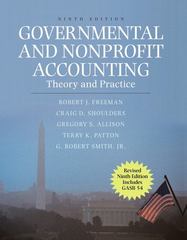Could you please help explaining the way for me calculate these answers?
Weighted Average Cost of Capital and Net Present Value Analysis Reed Incorporated is considering a proposal to acquire new equipment for im manufacturing division. The equipmentwill cost $192,000, be useful for four years, and have a $12,000 salvage value. Reed expecG annual savings in cash operating expenses (before taxes) of $68,000. For tax purposes, the annual depreciation deduction will be $64,000, $86,000. $28,000, and $14,000, respectively, for the four years (the salvage value is ignored on the tax return). The income tax rate is 40%. Reed establishes a hurdle rate for a net present value analysis at the company's weighted average cost of capital plus 1 percentage point. Reed's capital is provided in the following proportions: debt, 50%; common stock, 35%; and retained earnings, 15%. The cost rates for these capital sources are debt. 8%; common stock. 10%; and retained earnings, 12%. a. Compute Reed's (1) weighted average cost of capital and (2) hurdle rate. Round answers to one decimal place. For example. 0.456? = 45.7%. Weighted Average Cost ofcapital Debt '31: Common stock Retained earnings {1 J Weighted avg. cost of capital {2] Hurdle rate: #2333 b. Using Reed's hurdle rate, compute the net present value of this capital expenditure proposal. Round answers to the nearest whole number. Use rounded answers for subsequent calculations. Use a negative sign with net present value to indicate a negative amount. Otherwise do not use negative signs with your answers. After-Tax Cash Flow Analysis Amount PresentValue Aftertax cash expense savings $ $ Tax savings from depreciation Year 1 Year 2 Year 3 Year 4 Aftertax equipment sale proceeds Total present value of future cash ows Investment required in equipment Net present value $ I Under the net present value analysis, should Reed accept the proposal? Select the most appropriate answer below. CReed should not accept the proposal, because its net present value is positive. CReed should accept the proposal, because its net present value is negative. CReed should accept the proposal, because its net present value is positive. CReed should not accept the proposal, because its net present value is negative








